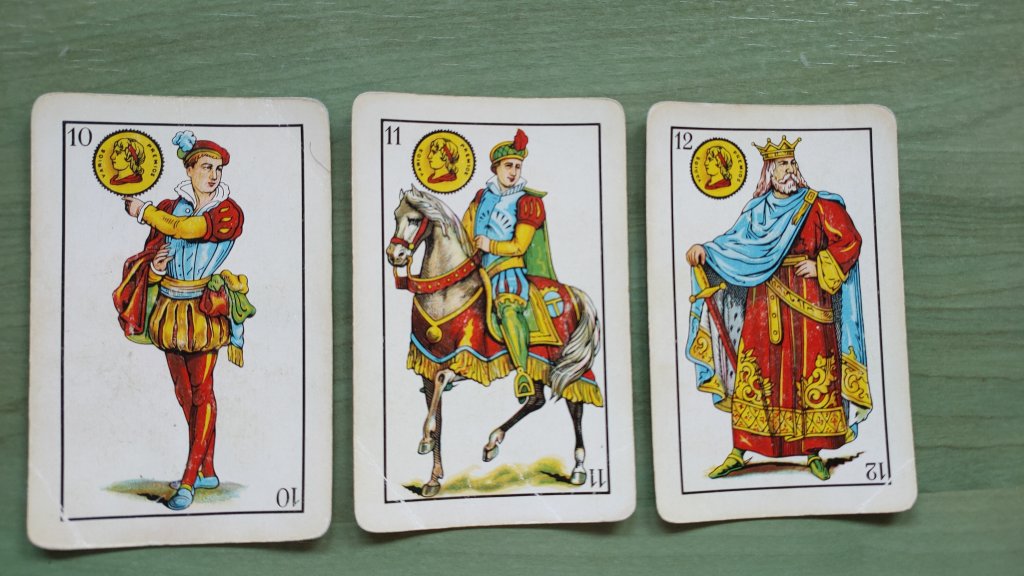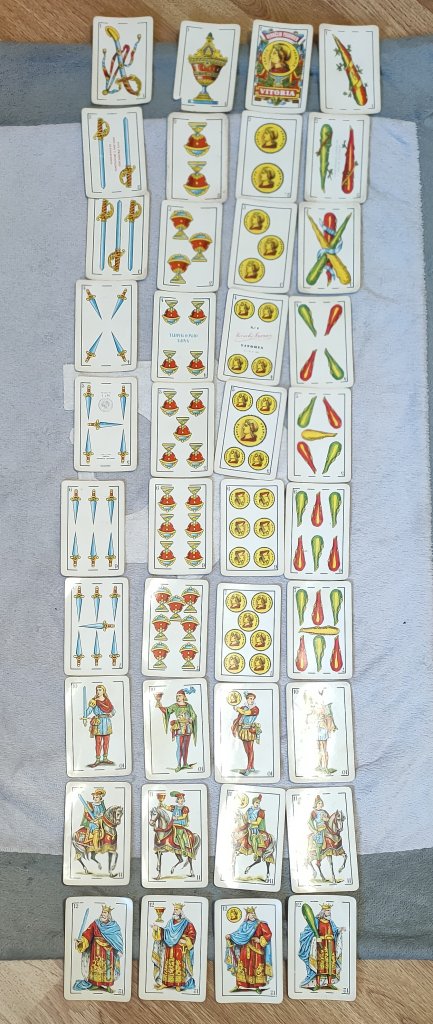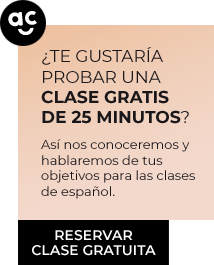En España en muy habitual pasar un buen rato jugando a las cartas. Para jugar a cartas o juegos de naipes usamos una baraja española que consta de 4 palos o familias: espadas, bastos, oros y copas.
In Spain it is very common to have a good time playing cards. To play cards or card games we use a Spanish deck that consists of 4 families: swords, clubs, coins and cups.

Espadas, bastos, oros y copas
Nuestra baraja tiene alrededor de 600 años, por lo que para saber qué significan sus símbolos debemos tener en cuenta la historia de la época. Aunque no existe una explicación 100% concreta, la más fiable es la aportada por Antoine Court de Gébelin en 1781, quien asoció los símbolos a estatus de sociedades medievales. Cada familia o palo tenía un significado: Por ejemplo, en el caso de los oros en el pasado representaba el dinero, es decir,el comercio. Otro de los pilares de la época era la iglesia, el clero, representados por medio de las copas. Después del comercio y la iglesia, faltan por representar los campesinos y los nobles. El campesinado y la agricultura se representan por medio de los bastos, mientras que las espadas representan a los nobles y militares.
Our deck is around 600 years old, so to know what its symbols mean, we must take into account the history of the time. Although there is no 100% concrete explanation, the most reliable is the one provided by Antoine Court de Gébelin in 1781, who associated the symbols with the status of medieval societies. Each family or suit had a meaning: For example, in the case of gold in the past it represented money, that is, trade. Another of the pillars of the time was the church, the clergy, represented by the cups. After commerce and the church, the peasants and nobles remain to be represented. The peasantry and agriculture are represented by means of the clubs, while the swords represent the nobles and the military.
Cada familia tiene 10 cartas, si usamos una baraja de 40 cartas (es posible jugar con 48 o 50 cartas). Tenemos los siguientes: el as que (es el uno), el dos, el tres, el cuatro, el cinco, el seis, el siete, la sota, el caballo y el rey.
Each family has 10 cards, if we use a deck of 40 cards (it is possible to play with 48 or 50 cards). We have the following: the ace (it’s the one), the two, the three, the four, the five, the six, the seven, the jack, the horse and the king.

La sota representa a un “paje”. El nombre viene del adverbio latino subtus, que significa ‘debajo’. Esta carta se llama así porque es la figura humana que está por debajo del rey y del caballo.
The jack represents a “page”. The name comes from the Latin adverb subtus, which means ‘under’. This card is so called because it is the human figure that is below the king and the knight.

Existen multitud de juegos con la baraja española. Algunos muy famosos son: el chinchón, la escoba, la briscca, el mus, el burro, el mentiroso, las 7 y media, el cinquillo, etc. Pero la explicación de alguno de ellos lo dejo para otra ocasión. ¡Hasta la próxima entrada!
There are many games with the Spanish deck. Some very famous ones are: el chinchón, la escoba, la briscca, el mus, el burro, el mentiroso, las 7 y media, el cinquillo, etc. But the explanation of some of them I leave for another occasion.



